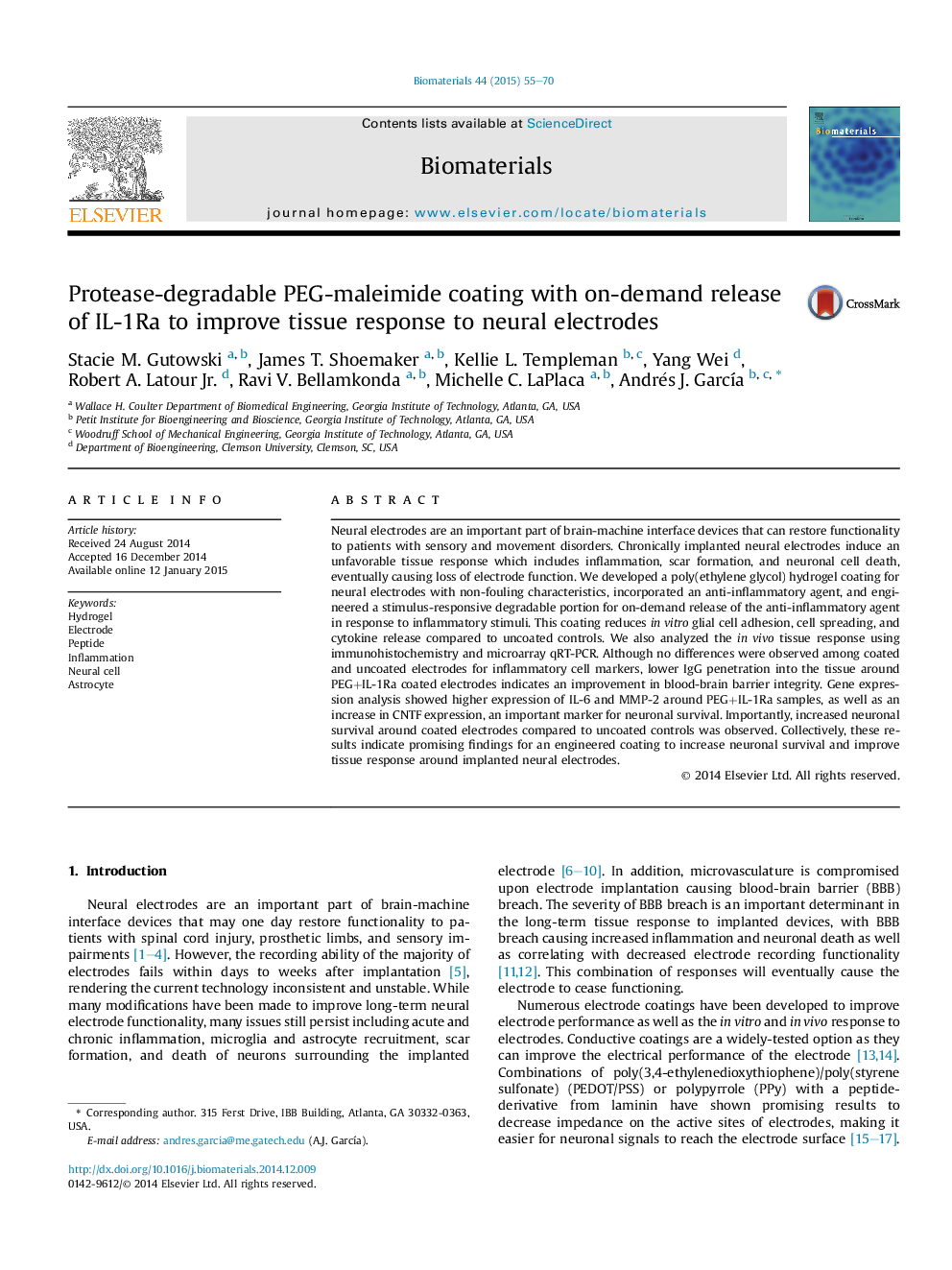| Article ID | Journal | Published Year | Pages | File Type |
|---|---|---|---|---|
| 6486214 | Biomaterials | 2015 | 16 Pages |
Abstract
Neural electrodes are an important part of brain-machine interface devices that can restore functionality to patients with sensory and movement disorders. Chronically implanted neural electrodes induce an unfavorable tissue response which includes inflammation, scar formation, and neuronal cell death, eventually causing loss of electrode function. We developed a poly(ethylene glycol) hydrogel coating for neural electrodes with non-fouling characteristics, incorporated an anti-inflammatory agent, and engineered a stimulus-responsive degradable portion for on-demand release of the anti-inflammatory agent in response to inflammatory stimuli. This coating reduces in vitro glial cell adhesion, cell spreading, and cytokine release compared to uncoated controls. We also analyzed the in vivo tissue response using immunohistochemistry and microarray qRT-PCR. Although no differences were observed among coated and uncoated electrodes for inflammatory cell markers, lower IgG penetration into the tissue around PEG+IL-1Ra coated electrodes indicates an improvement in blood-brain barrier integrity. Gene expression analysis showed higher expression of IL-6 and MMP-2 around PEG+IL-1Ra samples, as well as an increase in CNTF expression, an important marker for neuronal survival. Importantly, increased neuronal survival around coated electrodes compared to uncoated controls was observed. Collectively, these results indicate promising findings for an engineered coating to increase neuronal survival and improve tissue response around implanted neural electrodes.
Related Topics
Physical Sciences and Engineering
Chemical Engineering
Bioengineering
Authors
Stacie M. Gutowski, James T. Shoemaker, Kellie L. Templeman, Yang Wei, Robert A. Jr., Ravi V. Bellamkonda, Michelle C. LaPlaca, Andrés J. GarcÃa,
